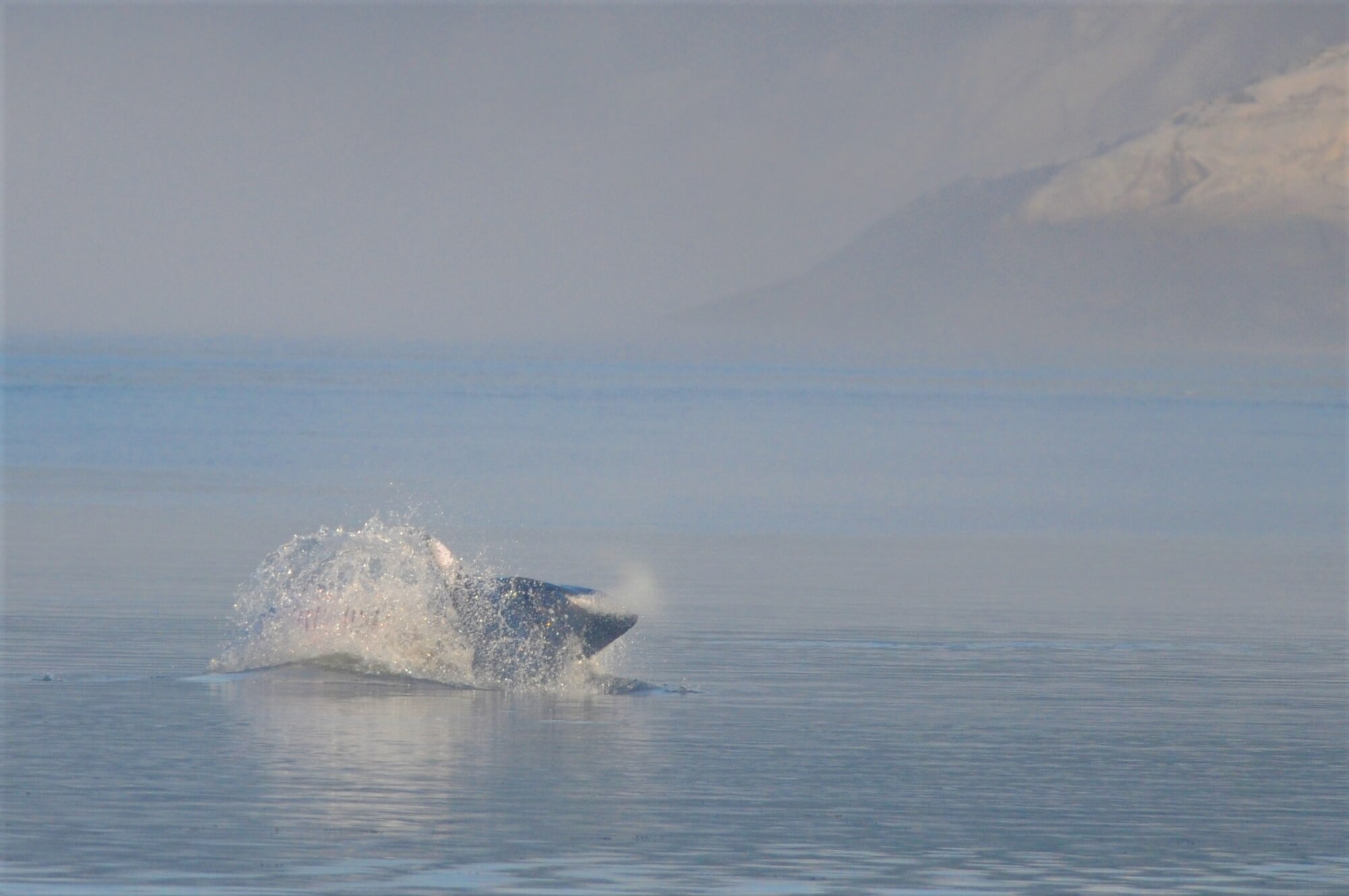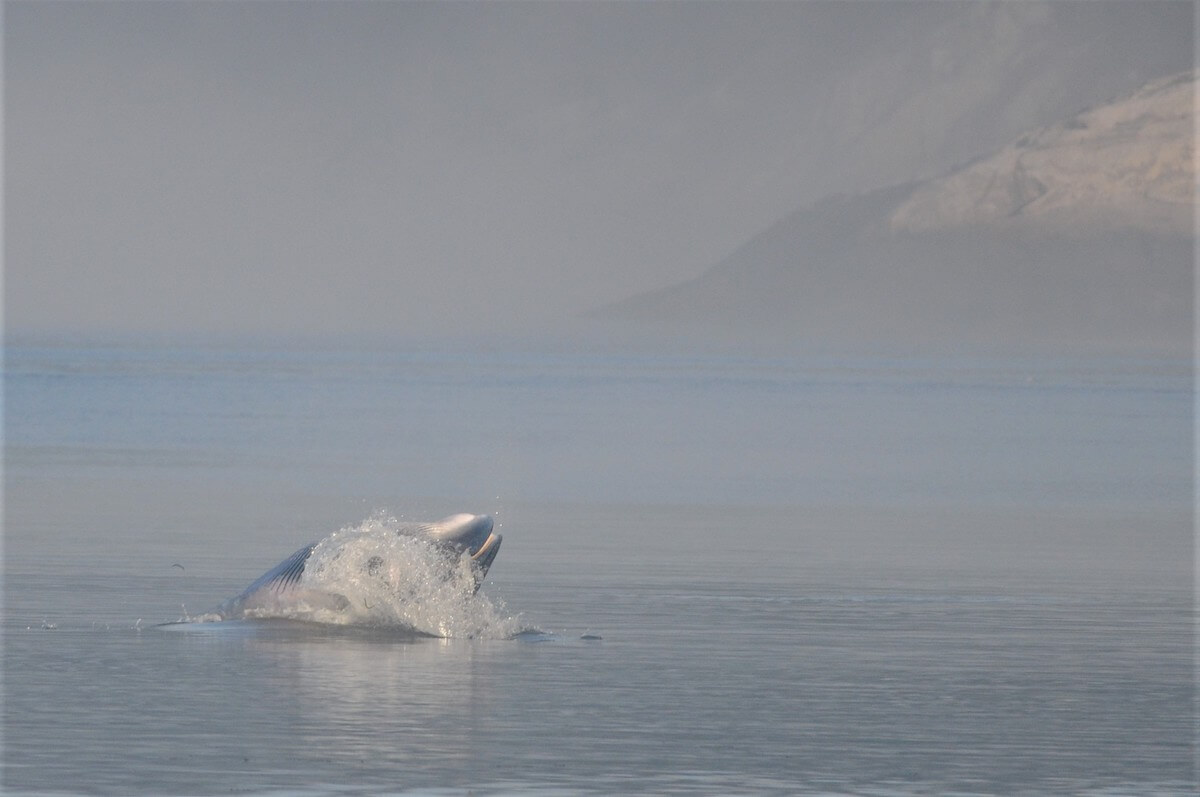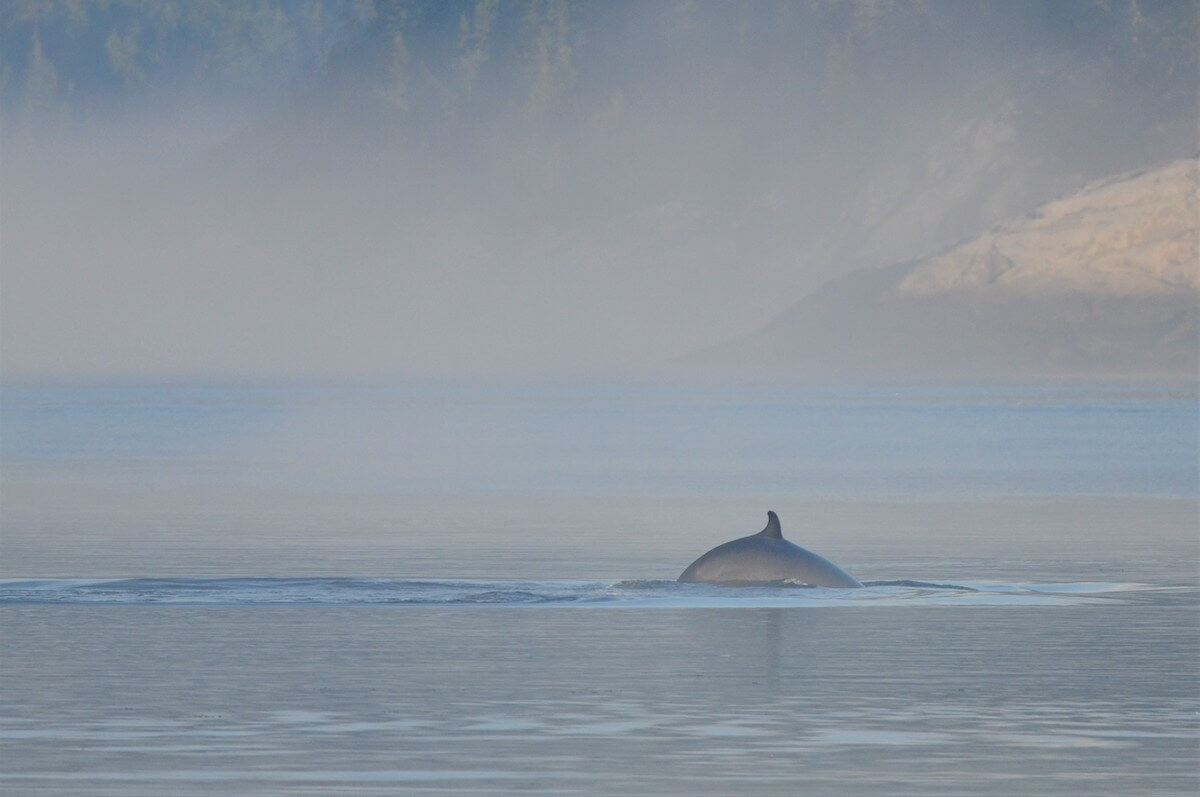Have you ever heard a minke whale feeding at the surface? What a ruckus! An explosive spout is heard and, almost at the same time, a huge splash. Even with one’s eyes closed, one could spot a whale feeding like this. And when the minke whale slips below the surface again, silence reigns again. On July 20, off Tadoussac’s Pointe de l’Islet, a GREMM employee watches for the minke whale’s next appearance. Another breath, another spray of water. Followed by another moment of silence. Then the minke whale emerges again, this time with a less explosive spout. Having finished its meal, it continues on its way.
The day before, in Baie-des-Sables, a minke whale was also creating quite a racket by breaching just opposite the village. If we think that a “cannonball” jump into a swimming pool makes a lot of noise, then just imagine an animal weighing 6 to 8 tonnes crashing onto the water surface… Another minke whale breached off Pointe-des-Monts. “It’s quiet in terms of species diversity, but when you have a minke whale that breaches for two to three hours straight, then that’s pretty good!” confirms one observer.
Minke whales are not the “chattiest” of marine mammals. In the St. Lawrence Estuary, minkes seem to vocalize even less than fin whales. They produce low-frequency sounds that sometimes resemble grunts, other times a thumping noise. They are not known to produce sounds when out of the water.
The most vocal whales in the St. Lawrence are undoubtedly belugas. Nicknamed “canaries of the sea” for their vast vocal repertoire, belugas can make audible sounds above the surface. On July 17, from Pointe de l’Islet in Tadoussac, another GREMM employee enjoys a “concert” of nearly a dozen passing belugas. “This is the first time I’ve ever heard them. I’m really impressed,” she says, mimicking the screams, grunts and other strange sounds that are difficult to put into words.
Another cetacean famous for its vocalizations is the humpback whale. In the St. Lawrence, humpbacks hardly ever sing, if at all. In this species, singing is more associated with reproduction. And since the main activity in summer is feeding, long complex vocalizations are not produced. However, humpbacks still communicate when they are here. Occasionally, humans can sometimes hear a few grunts, not to mention the species’ powerful spouts.
Other times, what reaches our ears are the humpback’s acrobatic breaches. On July 16, an observer who is usually in Sept-Îles pays a visit to the Saguenay-St. Lawrence Marine Park. During a cruise out of Les Escoumins, he witnesses breaches, tail slaps and pectoral fin slaps performed by the humpback whale H858, a.k.a. “Queen”.
Off Bonaventure Island on July 22, a humpback whale hurls itself into the air, though too far from observers, who can see the breaches but are unable to hear the splashes.
On July 21, screeching Atlantic white-sided dolphins make a noticeable appearance off Cap Gaspé in the Gaspé Peninsula. Dolphins produce whistles and clicks, amongst other sounds. They even possess individual voice signatures, which can be used to help distinguish them from one another.
And what about the basking shark encountered on July 18 off Cap Gaspé? Does it ever vocalize? No, sharks lack the organ needed to make sounds. So unless they slap their tails or make humans scream (in fear or excitement), sharks are perfectly silent…
Where are the whales this week? Find out on the map!
It gives an idea of the presence of whales and does not at all represent the actual distribution of whales in the St. Lawrence. Use it for fun!










